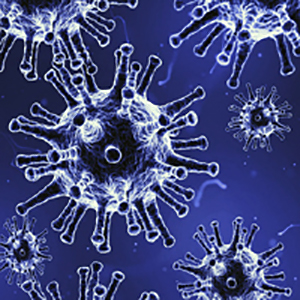Outcomes of patients with COVID-19 hospitalized during the fourth pandemic wave in relation to their clinical features and vaccination status

Submitted: 28 October 2022
Accepted: 13 December 2022
Published: 30 December 2022
Accepted: 13 December 2022
Abstract Views: 1746
PDF: 235
HTML: 17
HTML: 17
Publisher's note
All claims expressed in this article are solely those of the authors and do not necessarily represent those of their affiliated organizations, or those of the publisher, the editors and the reviewers. Any product that may be evaluated in this article or claim that may be made by its manufacturer is not guaranteed or endorsed by the publisher.
All claims expressed in this article are solely those of the authors and do not necessarily represent those of their affiliated organizations, or those of the publisher, the editors and the reviewers. Any product that may be evaluated in this article or claim that may be made by its manufacturer is not guaranteed or endorsed by the publisher.
Similar Articles
- Mohamed Gamal Elsehrawy, Acceptance to take COVID-19 vaccine and its relation to COVID-19 infection , Italian Journal of Medicine: Vol. 18 No. 2 (2024)
- Michaela Boggan, Christopher L. Edwards, Jordan Meek, Mary Wood, W. Jeff Bryson, John J. Sollers, Debra O. Parker, Camela S. Barker, Jessica Miller, Brianna Downey, Asha Lockett, Jazmin Rosales, Courtney Munroe, Jr., Noa Wax, Sharena Scott, Adult sickle cell disease and SARS-CoV-2: an increasingly common comorbidity for a rare disease , Italian Journal of Medicine: Vol. 18 No. 3 (2024)
- Filomena Pietrantonio, Francesco Rosiello, Matteo Ruggeri, Maria Sofia Cattaruzza, Antonio Vinci, Margherita Lordi, Enrica Cipriano, Prevention is better than healing. Clinical and economic implications of oral antiviral agents in COVID-19: a prospective study , Italian Journal of Medicine: Vol. 18 No. 2 (2024)
- Talal Qadah, Assessment of knowledge and attitude among healthcare workers towards monkeypox disease: a cross-sectional study from Saudi Arabia , Italian Journal of Medicine: Vol. 17 No. 2 (2023)
- Domenico Colimberti, Roberto Frediani, Organizational actions to tackle distrust: Building Trust Italy , Italian Journal of Medicine: Vol. 16 No. 1 (2022)
You may also start an advanced similarity search for this article.

 https://doi.org/10.4081/itjm.2022.1541
https://doi.org/10.4081/itjm.2022.1541




